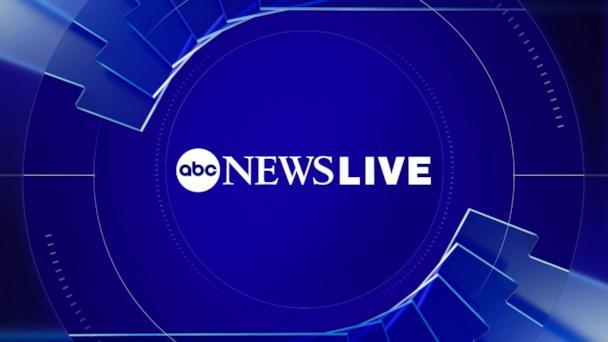Live streaming is fast becoming a primary channel for breaking news, as audiences bypass scheduled bulletins for real-time video from the scene. From natural disasters to election nights, raw feeds on platforms such as YouTube, TikTok, Instagram and Twitch are pulling in viewers seeking immediacy and unfiltered perspectives, reshaping how news is gathered, verified and delivered.
The shift is forcing newsrooms and tech companies to adapt. Publishers are building live hubs and verification teams, creators and eyewitnesses are emerging as frontline sources, and platforms are tightening rules around safety and misinformation in high-stakes moments. As the format surges, the central questions for the industry are growing sharper: who controls the narrative when anyone can go live, and how can speed coexist with accuracy and accountability?
Table of Contents
- Live Streaming Becomes the Front Line for Breaking News as Audiences Seek Real Time Context
- Verification at the Speed of Live Demands Dedicated Producers Source Labels and Persistent On Screen Timestamps
- Action Plan for Newsrooms Train Hosts Establish Corrections Protocols Add Brief Delay Buffers and Publish Moderation Rules
- Wrapping Up
Live Streaming Becomes the Front Line for Breaking News as Audiences Seek Real Time Context
As conflicts, elections, and extreme weather events unfold, raw video feeds are overtaking polished packages, with audiences demanding instant visuals paired with live verification and contextual analysis. Broadcasters and independent creators now layer maps, timelines, and on-screen sourcing cues over real-time footage, while newsrooms embed OSINT checks, translation, and geolocation to counter mislabeling and recycled clips. Platforms from YouTube and X to TikTok and Twitch have become staging grounds for rolling updates, prompting outlets to deploy correspondents who can narrate developments as they happen, correct in-stream errors, and clarify uncertainty rather than wait for post-production. The model rewards speed but elevates editorial risk, forcing teams to balance immediacy with safety protocols for reporters and eyewitnesses-especially where live metadata could expose locations or identities-and to disclose what is known, unknown, and under review.
- What audiences expect: on-the-spot footage, clear sourcing, rapid fact checks, and concise explainers.
- How newsrooms respond: dual-anchor formats, verified overlays (timestamps, maps), and standardized correction prompts.
- Risks and safeguards: miscaptioned clips, deepfake spillover, doxxing concerns; stricter delay buffers and verification tiers.
- Momentum drivers: creator collaborations, mobile-first workflows, and algorithms elevating sustained viewer engagement.
Verification at the Speed of Live Demands Dedicated Producers Source Labels and Persistent On Screen Timestamps
With live feeds now driving breaking coverage, editorial teams are hardening their pipelines: assigning dedicated verification producers to vet provenance in real time, applying consistent source labels on-screen, and maintaining persistent timestamps baked into the picture so audiences-and auditors-can track what was seen, when, and from where without pausing the stream.
- Roles: A verification lead shadows the live director, approves feeds, and maintains an audit log of every on-air cut.
- Labeling: Standard tags such as “Reporter Live,” “Eyewitness UGC,” “Official Feed,” and “Agency Pool” appear in lower-thirds and replays.
- Timekeeping: Frame-constant UTC timecodes, NTP-synced, remain visible across crops and clips to preserve sequence integrity.
- Automation: Graphics systems flag unlabeled sources or missing clocks before program output.
- Escalation: Footage that fails 2-source corroboration is quarantined or carried with on-screen “Unverified” disclosure.
- Continuity: Exports retain original label and time overlays, ensuring chain-of-custody for corrections and investigations.
Action Plan for Newsrooms Train Hosts Establish Corrections Protocols Add Brief Delay Buffers and Publish Moderation Rules
With live streaming now driving breaking coverage, outlets are shifting from ad hoc improvisation to a real-time playbook that centers verification, audience safety, and transparent accountability.
- Train on-air facilitators: scenario-based rehearsals, source-vetting checklists, clear escalation paths to editors, and live risk assessments to prevent amplification of unverified claims.
- Codify rapid corrections: timestamped on-screen “Update/Correction” banners, pinned chat and description edits, versioned replay notes, and a public log that preserves the original error and fix.
- Add short broadcast delays: a 20-45 second buffer with a dedicated operator, profanity/graphic filters, and a kill-switch to a holding card stating “Verifying information” when feeds turn volatile.
- Publish and enforce moderation standards: visible rules across platforms, slow-mode and link blocks during sensitive moments, a strike system for violators, and routine transparency reports on enforcement.
Wrapping Up
As live video becomes a default lens on unfolding events, the balance between immediacy and verification is redefining how audiences consume news and how newsrooms produce it. Platforms are investing in product features and moderation, while publishers formalize workflows to authenticate user-generated footage in real time. The result is a faster, more participatory news cycle-and a higher premium on accuracy, context, and safety.
What happens next will hinge on trust. With major news moments ahead and regulators watching, the durability of live streaming as a credible source will depend on transparent standards, sharper labeling, and sustained collaboration between platforms, journalists, and creators. For now, the red “live” badge signals both unprecedented access and an ongoing responsibility to get it right.


